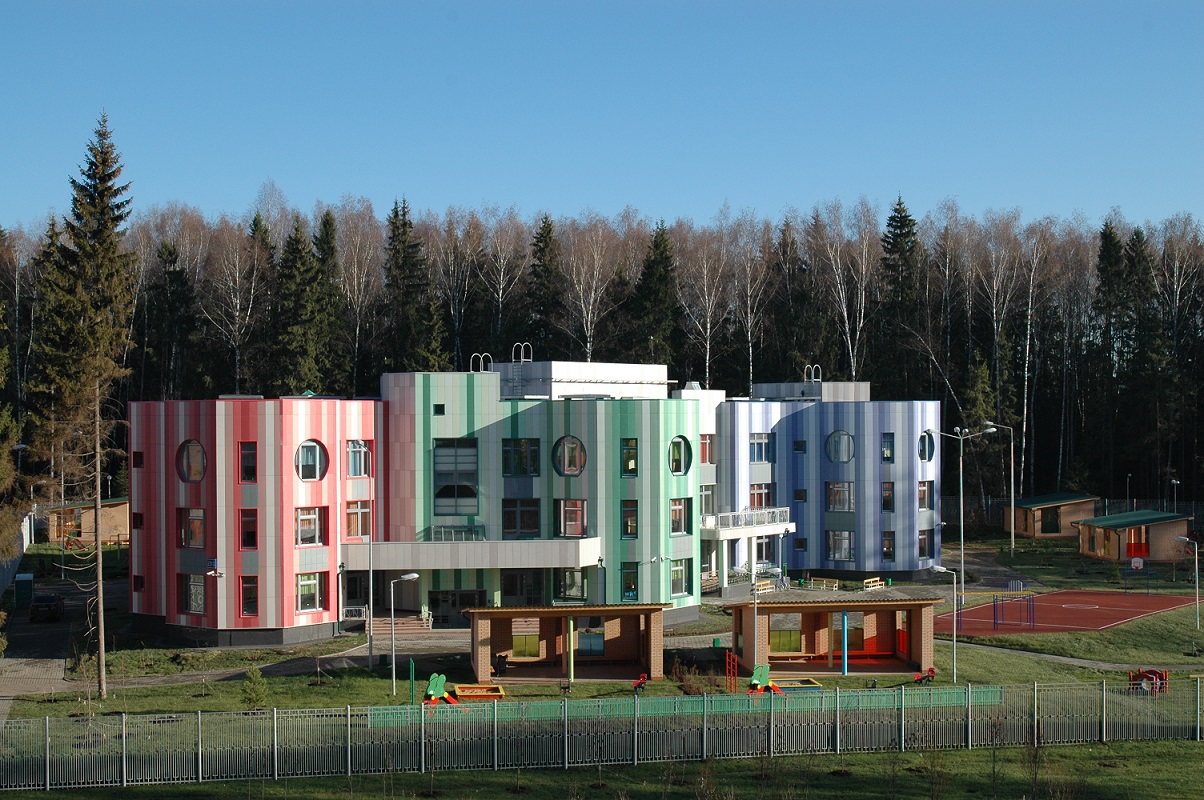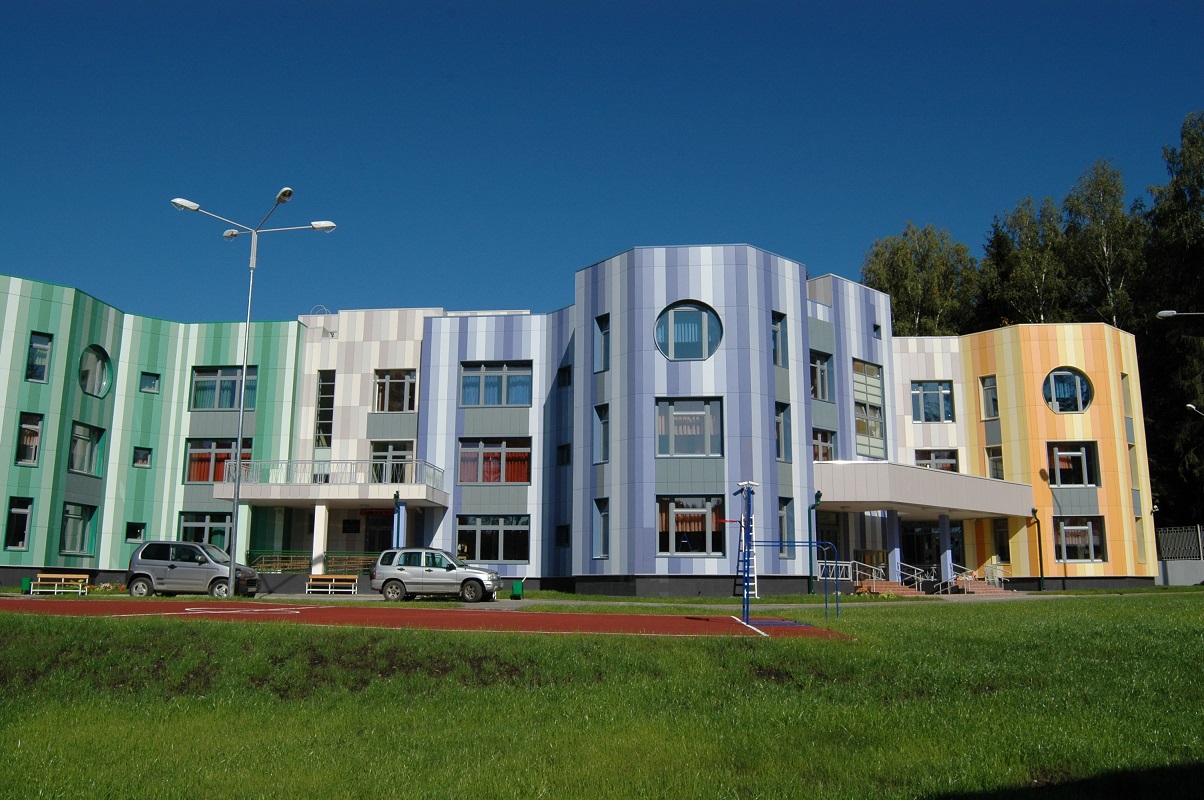Everyone to school. Model projects for the capital’s preschool educational institutions
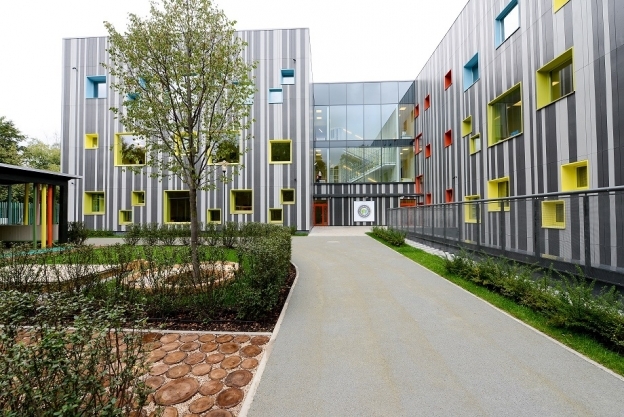
In 2014 an important social problem was addressed in Moscow: every resident of the city aged 2.5 to 7 years old now has the opportunity to attend kindergarten. Mayor Sergei Sobyanin spoke about this in his report on the results of the Moscow Government and the main parameters of the city’s budget for 2015–2017. But no less important is the fact that the growth in the number of places in the capital’s kindergartens comes amid their fundamental modernization to meet new requirements for the design of preschool educational institutions.
Facts and Figures
Back in 2010 one third of young Muscovites were deprived of the opportunity to attend kindergarten. From 2010 to 2013 the number of places in the capital’s preschool educational institution has nearly doubled — from 288 to 415 thousand. This year, the city is planning to build 34 more kindergartens: 24 using budget funds (4,270 places) and another 11 built by private investors. Standard indicators have also changed — today in Moscow the norm is 50 places for every thousand inhabitants.
Although the norms have been fulfilled, the construction of kindergartens in the city will continue in the future. In 2014-2016, by the Targeted Investment Program, i.e. by the city budget, Moscow plans to build another 60 kindergartens with 12 thousand places. These plans correspond to demographic projections, and will allow places in kindergartens to be provided to residents of newly developed areas.
Standard, unique
The first model projects for preschool education in the USSR were developed in the 1930s. In the 60s, during the period of mass industrial housing, which coincided with the near-universal employment of women in the economy, panel uniformity extended to educational institutions as well: the ranks of similar schools and kindergartens appeared one after the other in the same faceless residential neighborhoods.
In the 1990s, many of the buildings of kindergartens (mainly so-called institutional kindergartens) changed from educational to office work, and those that remained loyal to preschool education, went out of date morally and physically. Therefore, when in Moscow again the issue of increasing the number of places in preschools was raised, the city government adopted a far-sighted decision to develop a new generation of preschool educational institutions.
To accelerate the process of modernization of kindergartens without loss of quality in 2012-2013, new projects for kindergartens in Moscow have been developed, which were commissioned by the Committee for Architecture and Urban Planning of Moscow, the Department of Urban Development, as well as a number of large private developers.
These projects have been updated in accordance with contemporary ideas of society on the content and forms of preschool education, as well as meet the new architectural and urban planning requirements of the urban environment, which have been adopted in the capital in recent years.
The new projects have been collected in an album of standard kindergarten projects that are recommended for construction in Moscow. If anyone is repelled by such terms as “standard design” or “re-use project” then the phrase “model project” can be used, because in fact kindergartens that look very different from one another are being built in Moscow using these “album” designs. The practice of a working review by the Chief Architect Sergey Kuznetsov has been directed towards the individualization of the appearance of each new kindergarten building. Designers are strongly encouraged to develop and submit options for facade designs that match the character of the surrounding buildings and allow the appearance of the building to be individualized, so that as a result every child forms his own image of the kindergarten as a cheerful, friendly, and memorable place.

Architecture and coloring — this is also a tool of aesthetic education and emotional impact on young people. Therefore, giving young Muscovites proper influences in their perception of the city’s architecture, we are thereby taking care of the future look of Moscow.
Kindergartens for a new generation of Muscovites
What is the fundamental difference between the new projects from former kindergartens? One of the main requirements of a modern society is raising a healthy generation. Therefore, in the new projects kindergartens provide not only medical units, but also special offices for psychologists and speech therapists, as well as specialized sport and fitness gyms, and swimming pools. In the adjacent area, besides the traditional walking areas with verandas, also planned are mini-stadiums, football fields and volleyball courts, and so on.
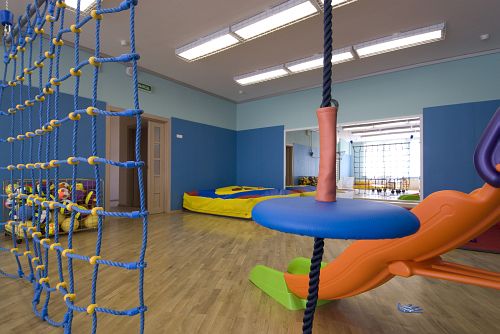
Designing developmental educational environments conducive to the comprehensive development of the personality of children is another trend of the times. In the new kindergarten projects special rooms are provided for groups with different focuses, music classes, dance, and theater.
The preschool education typology itself is expanding: so-called integrated types of preschool educational institutions are appearing. In their planning structure, usually on the lower floors, there are special facilities for short stay groups, counseling and rehabilitation centers.
Another important distinction of contemporary design practice for Moscow is the creation of a barrier-free environment in the kindergarten which is accessible to people with disabilities — both for students, and for visitors — parents, grandparents, etc. All premises of new generation kindergartens are accessible to persons with disabilities on any floor. To move between the floors, modern preschools are equipped with lifts while in old kindergarten projects lifts are usually not provided.
An accessible environment makes provisions for the development of an inclusive form of education as well, where it is possible for children with health problems to attend regular kindergarten together with healthy children. Moscow has already implemented kindergarten projects taking into account inclusive preschool education.

Another new trend is the creation of educational complexes in which the educational process continues starting from 2-3 year olds to 18 year olds. This educational center includes one or more kindergartens (preschool educational institute), a block of elementary classes, and a high school. (By the way, the first kindergartens which appeared in Russia in the late 19th century were created mostly at high schools too, so everything that is new is just well-forgotten things from the past). It is assumed that such multifunctional educational complexes can become cultural centers of districts, something which should also be reflected in their architectural appearance.
Kindergartens close to home
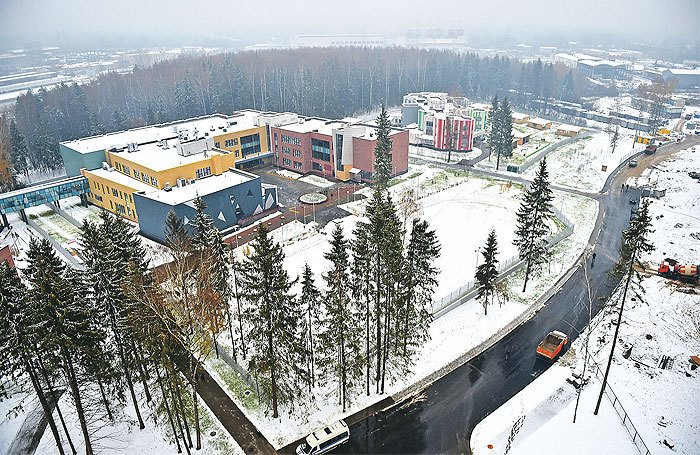
The principle of constructing housing in conjunction with community infrastructure and facilities has been adopted as one of the most fundamental in the capital. Moreover, today there are already examples of advanced social infrastructure. One such example is the 32nd micro-district “Zelyony Bor” in Zelenograd. On the territory of the new micro-district which is only being built up with residential houses, a full-featured education center for children from 3 to 18 years old already has been put in commission. It includes a school, an elementary block, and a kindergarten for 280 places (12 groups).

For the school and elementary block the architects of the Zelenograd AM design office developed an individualized project (chief architect Madi Azhigali).
The kindergarten was built by a standard “album” project, developed by MNIITEP (Moscow Research and Design Institute of Typology and Experimental Design) in 2012, but at the suggestion of Sergey Kuznetsov the authors came up with individual facade designs. Colored fiber cement plates in stripes gave a typical kindergarten building in Zelenograd a cheerful, positive and very “preschool” appearance.
The author of the project, architect Madi Azhigali, says that the kindergarten delights children, their parents and grandparents. “It’s amazing that in just changing the facades of a typical kindergarten, we were able to bring such joy to the residents of the neighborhood,” marvels the architect.
Private capital sets an example
To address the problem of kindergartens in Moscow private investors are also being actively involved. This year the city plans to put into operation 11 kindergartens built by private investors, so part of the program has already been completed.
Generally, the major construction and development companies that are ready to invest in social infrastructure are those that are engaged in the integrated development of urban areas. One of the first new generation preschool educational institutions in Moscow was built by the KROST corporate group, the children’s educational center “Khoroshevskaya gymnasium” (82nd quarter, Tukhachevsky St., 45.). In addition to the kindergarten with 150 places (6 groups), the complex includes 4 classes of elementary school with 100 places. The main space-planning designs were devised by KROST’s design firm — “A-Project”. The distinctive facades and interiors were created by the Dutch architectural firm 70°N arkitektur, which was the winner of a closed architectural international competition organized by the corporate group.
The children’s educational center was conceived as a social and cultural family center, where sports, parents meetings, psychologist counseling, children’s events, open creative studios and technical groups take place. Well-known child psychologists and educators were involved in developing its concept.

The educational complex consists of several functional blocks grouped around a courtyard, an atrium and a detached kindergarten block. Thanks to this arrangement, the kids and junior high school students live according to their own schedule, without disturbing each other, and at the same time can communicate at common events.
In the internal layout modern technologies of space transformation were used, which allows for a more flexible use of the compact internal space, merging or dividing it as needed. Specialized facilities are provided for the theater and dance studios, there are children’s workshops for sculpture and pottery classes, a studio for painting, language classes, a class of natural science, all equipped in accordance with modern teaching methods.
In the educational complex there is also a library with a media library, a spacious space for games with a variety of tools for intellectual development. The music room with artistic facilities and transformable stage space is equipped with modern instruments to put on shows.
There are two pools for swimming instruction and for practicing synchronized swimming.

The aim of the project was to create a lively and modern educational environment, taking into account the needs of child in sports and the arts, and promoting the development of multifaceted independent personalities, explained a representative of the KROST corporate group.
The creators of the complex have made provision for the physical and psychological health of staff at the educational institution. Two rooms are equipped for group sports and fitted with the necessary service facilities.
The educational complex “Khoroshevskaya gymnasium”, due to to its diverse functionality, technological equipment, and quality architectural “packaging”, corresponding to the general style of the surrounding buildings, has become an urban-forming, socio-cultural and architectural center of the “Union Park” neighborhood.
- Tags:
- Urban Design


